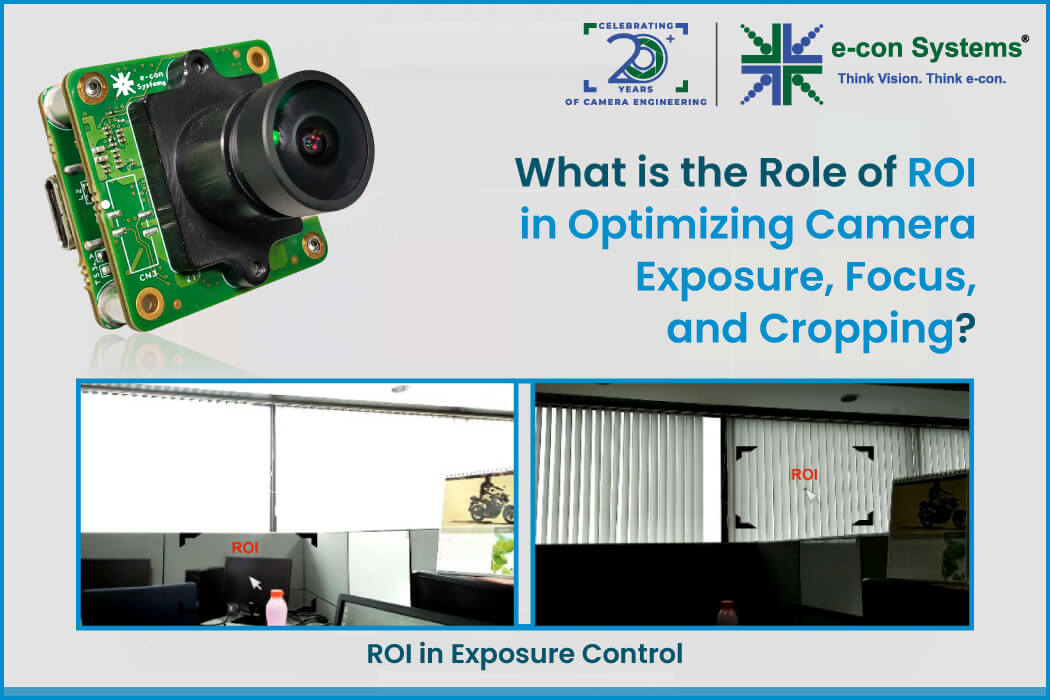Region of Interest (ROI) is a concept in imaging systems that enables targeted adjustments to exposure, focus, and cropping. It defines a specific portion of the sensor by enhancing the camera’s ability to address dynamic and static imaging requirements.
ROI plays a major role in fine-tuning camera performance, ensuring that exposure, focus, and cropping can align seamlessly with user-defined parameters. This helps deliver high-quality results across applications, from industrial automation to surveillance systems.
In this blog, you’ll learn about how ROI coordinates influence these parameters and optimize imaging outcomes.
ROI in Exposure Control
Exposure adjustments hinge on the ROI coordinates, which are defined as X0, Y0 (start) and X1, Y1 (end). The size and location of this defined region guide the Auto Exposure (AE) algorithm to achieve optimal brightness and contrast.
The luminance within the ROI is analyzed to determine the required exposure settings and gain levels. Hence, the areas of interest in the frame receive balanced illumination, regardless of the varying brightness across the rest of the scene. Such fine-tuned exposure ensures the target region is neither overexposed nor underexposed, as shown below.
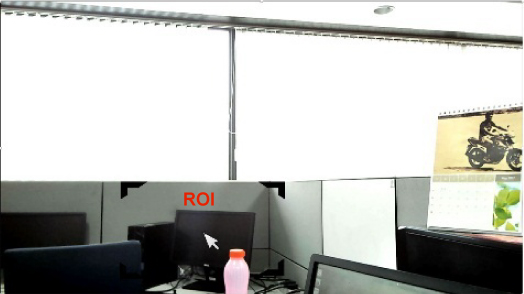 |
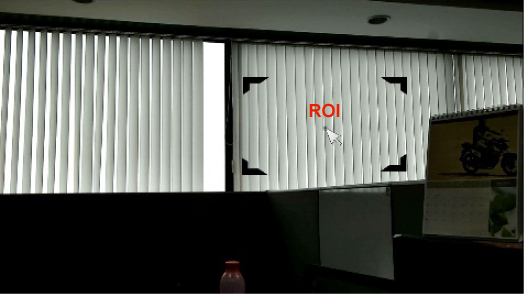 |
ROI and Focus Optimization
In autofocus systems, ROI coordinates define the focus window size and position. The lens position is dynamically adjusted based on sharpness and contrast metrics calculated within this region. It enables precise focus on the subject within the defined area, making it advantageous for applications like object tracking, facial recognition, and industrial inspections.
Furthermore, the system avoids interference from irrelevant regions by restricting focus adjustments to the ROI, thereby delivering clarity where it matters most. This can be very beneficial in settings with multiple objects at varying distances.
ROI and Cropping
Cropping involves defining a static ROI or customized resolution to refine the field of view (FOV). The static ROI serves as a fixed frame, with its boundaries marked by start (X0, Y0) and stop (X1, Y1) points on the sensor. The cropped image captures only the desired portion of the scene, as shown below, reducing processing loads and improving the relevancy of the data captured.
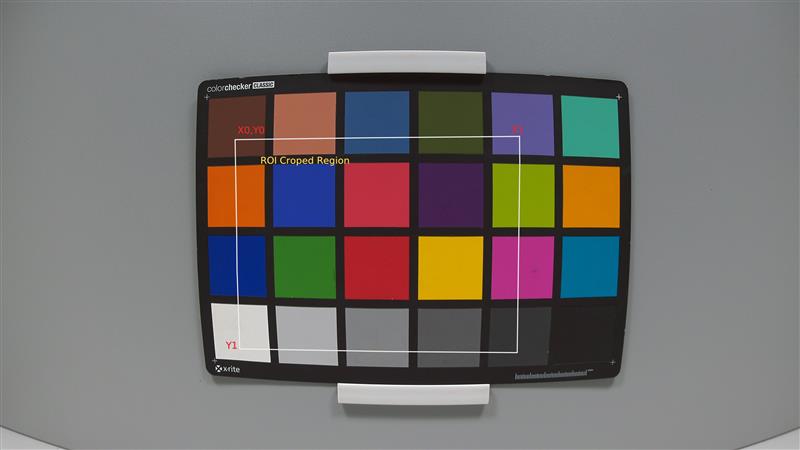 |
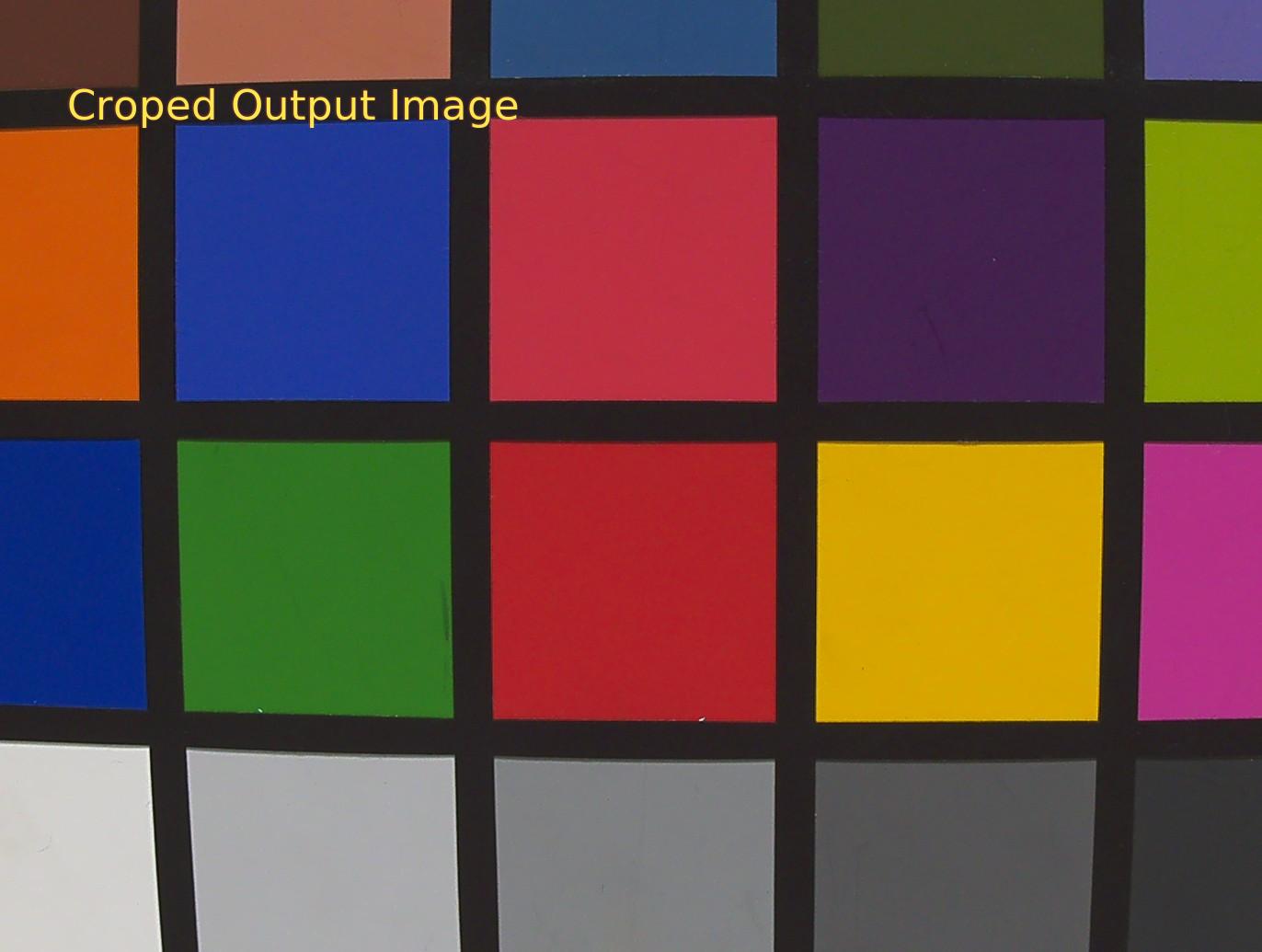 |
Dynamic ROI further extends this concept by enabling on-the-fly adjustments to the region being streamed. It can be critical in applications where the target area can shift frequently, which demands real-time changes to the ROI coordinates.
Tapping into the Power of Dynamic ROI: Real-World Cases
e-con Systems has worked with several clients to help them maximize the role of ROI as part of our camera solutions. Let’s briefly look at four case studies:
Case study 1
- Customer: Leading telecommunication equipment provider
- Camera: See3CAM_50CUG (5MP high-sensitivity fixed-focus camera)
- Application: Fluid analytics
In this scenario, a static ROI was used by e-con Systems to crop the field of view, reducing the image size and optimizing data throughput. The camera achieved a higher frame rate (FPS) without compromising accuracy by narrowing the readout to a defined portion of the sensor.
It was important for fluid analytics, where real-time data processing required rapid frame capture and proper resource utilization.
Case study 2
- Customer: Fast-growing healthcare software provider
- Camera: See3CAM_CU30 (3.4 MP low-light USB camera)
- Application: Intra-oral (medical)
Here, e-con Systems made sure cropping was used to align the field of view with the lens’s image circle. It helped deliver optimal image quality while eliminating unnecessary sensor readouts, leading to reduced data volume and enhanced image processing speeds.
Considering it was for an intra-oral imaging device used in medical diagnostics, the client found it easy to get accurate visuals of the target area, which resulted in better patient care.
Case study 3
- Customer: Multinational information and communications technology equipment and service provider
- Camera: See3CAM_130AF (13MP 4K autofocus USB camera)
- Application: Face detection
e-con Systems’ camera solution managed exposure and focus dynamically with dynamic ROI. The ROI-based adjustments allowed the system to optimize brightness and sharpness specifically for faces in the frame. Fine-tuning the lens position and exposure levels within the defined area led to the camera delivering high-resolution, well-illuminated images.
So, the client was able to drive accurate face detection in security and communication systems.
Case study 4
- Customer: Leading automotive garage equipment manufacturer
- Camera: See3CAM_CU81 (4K HDR USB 3.1 Gen 1 camera)
- Application: Wheel alignment
e-con Systems helped leverage dynamic ROI to adapt the region of interest based on user-defined coordinates, all while maintaining a constant frame rate. It proved instrumental in wheel alignment systems, enabling consistent imaging of specific areas for accurate measurements.
The ability to adjust ROI dynamically enabled more flexibility and supported multiple alignment scenarios without compromising imaging consistency.
e-con Systems is a pioneer in offering custom camera solutions
Since 2003, e-con Systems has been designing, developing, and manufacturing OEM cameras. Over the years, we have understood that not all off-the-shelf cameras can address the unique demands of client applications. To address this, our experts specialize in end-to-end hardware and software customizations, including adjustments to form factor, ISP tuning, lens configuration, custom driver development, and more.
e-con Systems’ customization services save time, boost productivity and lower costs. It enables clients to focus on core product development while we ensure a seamless and cost-effective vision solution tailored to your needs.
Explore our complete portfolio on our Camera Selector Page.
If you require help integrating the ideal custom camera solution for your application, please reach out to camerasolutions@e-consystems.com.

Prabu is the Chief Technology Officer and Head of Camera Products at e-con Systems, and comes with a rich experience of more than 15 years in the embedded vision space. He brings to the table a deep knowledge in USB cameras, embedded vision cameras, vision algorithms and FPGAs. He has built 50+ camera solutions spanning various domains such as medical, industrial, agriculture, retail, biometrics, and more. He also comes with expertise in device driver development and BSP development. Currently, Prabu’s focus is to build smart camera solutions that power new age AI based applications.




